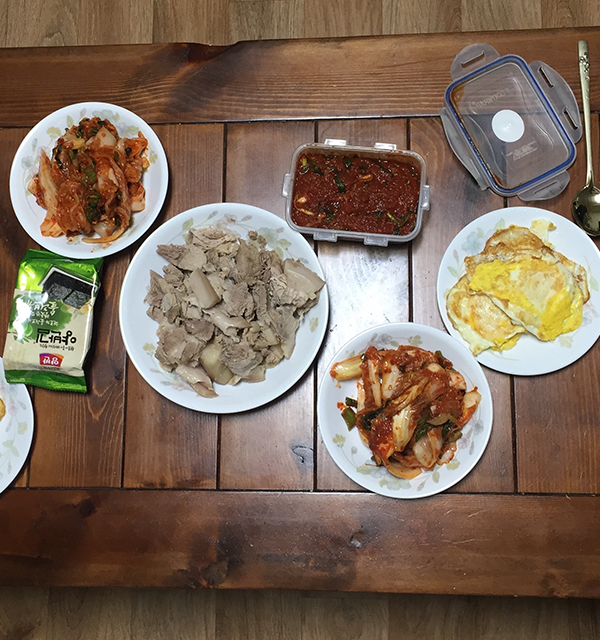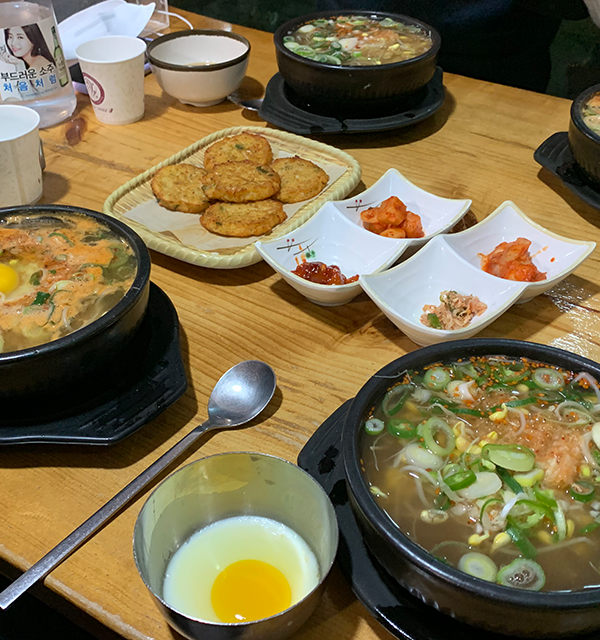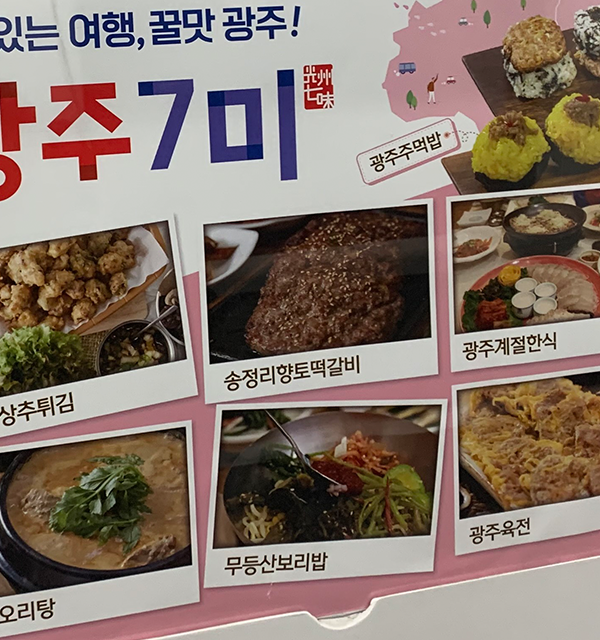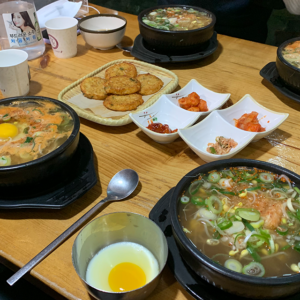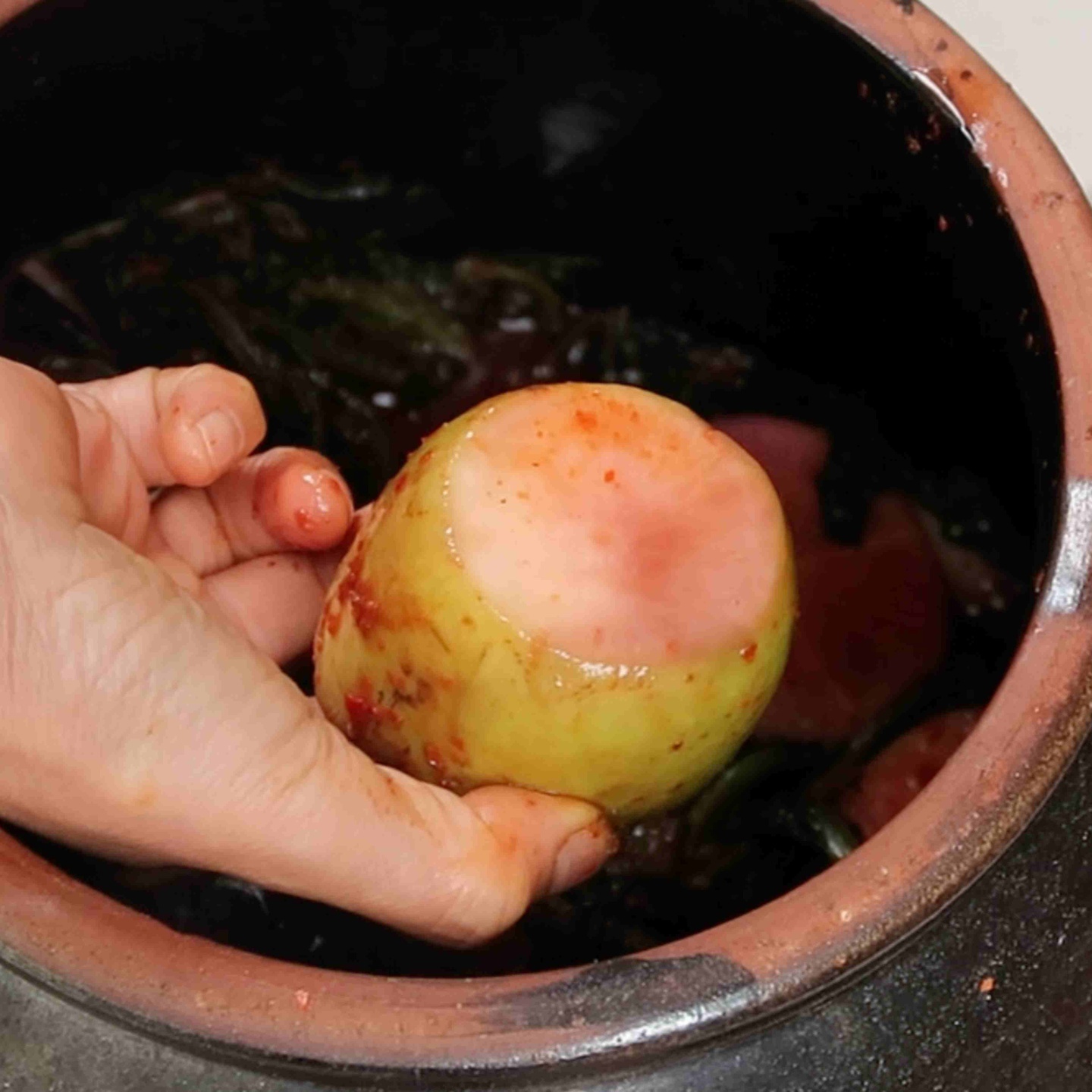Now that we learned a little history let’s cover what a typical Korean meal in a Korean household would look like.
In reality, complex dishes like braised pig feet (족발) would be enjoyed at a restaurant not because it is necessarily impossible to make at home, but because the work culture in Korea is very competitive, and so Korean people work hard and often. Korean work culture can make it more difficult to cook a lot of dishes for each meal.
Based on what I asked Korean people and my experience with eating with Korean people who work. In reality, the main dishes served on the table are rice, soup, and various kinds of Kimchi and namul (나물).
Putting that aside, though, (of course) there are Korean people who can cook more often or even add other fresh namul or grilled items to the table. There is no clear rule as to what must be served except for rice.
Although there are no “rules,” there is a general layout of what kinds of side dishes are often paired together on the table when possible.
But again, I just wanted to note that most commonly on the table are various kinds of kimchi, namul (나물), rice, and soup. So, to cook a delicious Korean meal, you can make it simpler than you may think. I will provide a more detailed meal plan for a month with some different dish pairings and whatnot, but for real, you can just serve a very simple meal of Kimchi, rice, namul (나물), and dried seaweed and it would be recognized as a Korean meal.
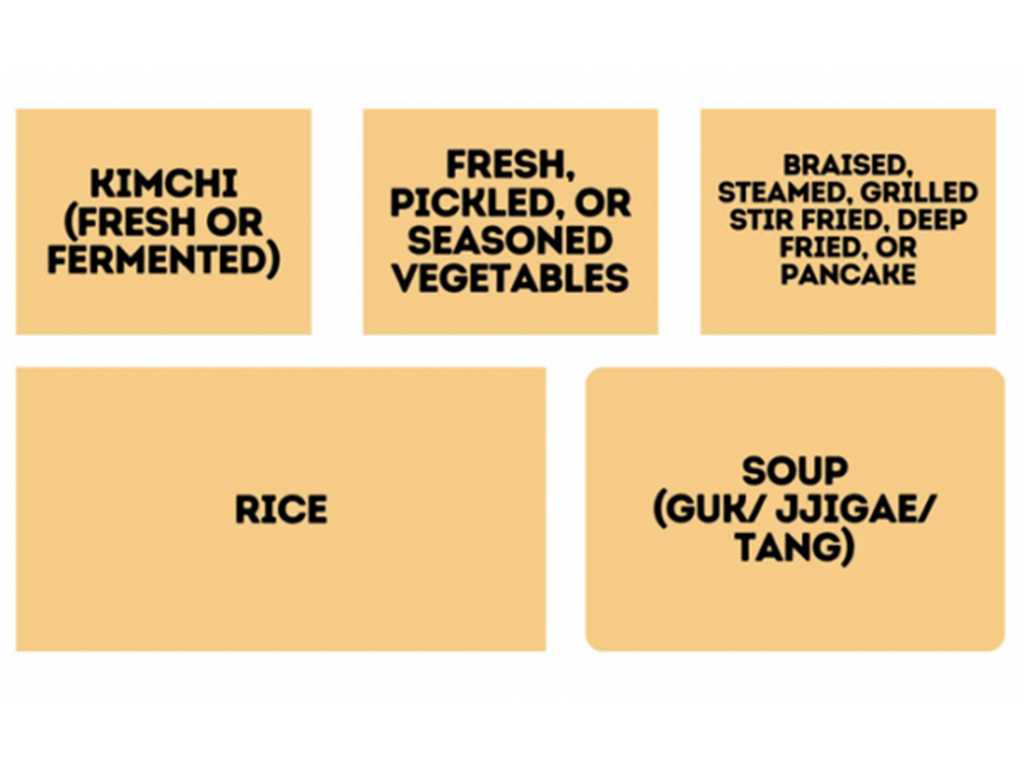
Let’s begin the basic breakdown of how to pair dishes on the table. Above you will see the basic layout for a Korean home-cooked meal.
Rice:
Most importantly, we have rice. Each person at the table gets their own individual bowl of rice. Rice is a must on the table. You can serve any kind of rice you prefer. It can be plain or mixed with other grains. Adding different rice, grains, nuts, and seeds provide texture, flavors, and, like I mentioned, nutrition which is important to the Korean people when it comes to their food.
Side Dishes (반찬):
There are different categories of side dishes but first, let’s define what a side dish is. Korean side dishes or Banchan (반찬) are small portions of dishes that are served on the table and shared with everyone at the table. Korean side dishes are meant to be eaten with rice. So, they are seasoned with the intention of being eaten with rice. Usually, Korean side dishes are served in an odd number on the table. For example, there may be 3 side dishes or 5 side dishes.
Now that you know what 반찬 is, we can now break down the categories of banchan further.
- Kimchi (김치): The first type of side dish would be Kimchi. Kimchi is a must at the table. You can serve all of your side dishes as different kinds of Kimchi. You can experiment and mix different kimchi varieties together on the table to enjoy, for example, cabbage, green onion, lettuce, or perilla leaf. You can serve a meal with just kimchi as a side dish. Some kimchi is usually served with certain dishes because it just pairs well, but if you ask a Korean housewife, they will tell you that all kimchi can go with any dish.
- Fresh Kimchi (겉절이)Cucumber Kimchi (오이김치)
- Cabbage Kimchi (배추김치)
- Protein side dish (백질 반찬): The second kind of side dish is protein side dishes some examples are braised tofu, steamed egg, grilled fish, and beef pancakes. These side dishes add different textures and flavors to the table.
- Braised Black Beans (콩조림)Braised Tofu (두부조림)Steamed Egg (계란찜)Grilled Fish (생선구이)
- Beef Pancake (소고기전)
- Long-lasting side dish (밑반찬): The next category of side dishes are categorized as dishes that you make and that you eat over time, so they are more long-lasting. There are categories that fall under this category of 밑반찬, and some examples are soy pickled foods, salted fish, and fried vegetables.
- Salted fish (젓갈)Soy Pickled (장아찌)Jaban (category) (자반)
- Bugak (부각)
- Vegetable side dish (채소반찬): The final category is vegetable-side dishes like namul. Again, these are very important side dishes to include on the table. 무침 is the most popular kind of namul that is served. The term 무침means mixed. Fresh and blanched namul fall under the category of 무침.
- Squash Pancake (호박전)Seasoned Fresh Shepherd’s Purse (냉이무침)Seasoned Dried Radish (무말랭이무침)
- Stir-fried Mushroom (버섯볶음)
Soups:
Along with the side dishes and rice, you will often see a type of soup served at the table.
Korean soups can be eaten any time of the day. Sometimes Guk or lighter soups are eaten for breakfast because certain ingredients can be helpful to eat in the morning. An example of this would be bean sprout soup which can help with hangovers. Although some soups may be preferred at different times of the day, there is no real rule for when you should eat certain soups. Most of the time, soups like jjigae (찌게)and jeongol (전골) are shared by everyone at the table, and soups like guk (국) are served in individual bowls. Soup is very important in Korean cuisine, so try to make sure you have one at the table.
My advice for you when you are creating your own Korean styles meals at home based on this chart is to balance the flavors of salty, sour, spicy, sweet, fresh, and savory. Avoid having too many dishes that have the same flavor profile on the table. For example, salty soybean paste soup + braised soy lotus root + beef pancake may be a bit too soy and salt-based. Swapping the braised lotus root for fresh spicy seasoned cucumber would add a more balanced flavor. You can experiment and use this chart as a reference.
